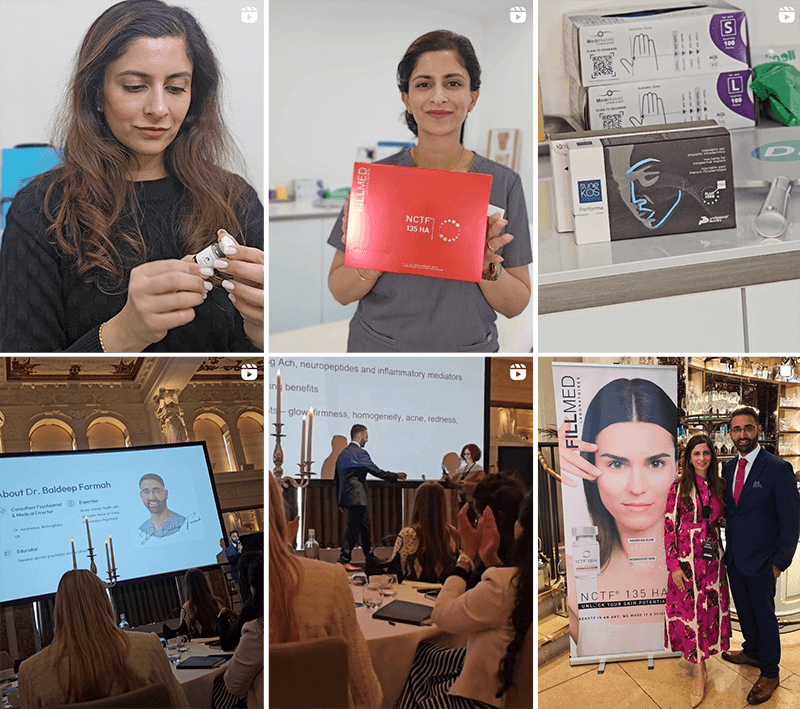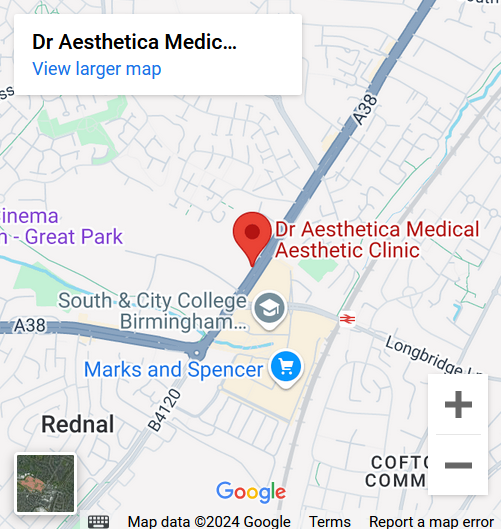
Are you considering getting a rhinoplasty to improve the appearance of your nose but unsure of which option is better for you? In today's society, physical appearance holds great significance and many people opt for cosmetic treatments like rhinoplasty. However, the cost of surgery can be a major concern. Let's explore the differences in prices between non-surgical and surgical rhinoplasty, and help you make an informed decision.
What Is Rhinoplasty?
Rhinoplasty is a surgical procedure designed to alter the shape of the nose. It can address both aesthetic concerns, such as size, shape, or symmetry, and functional issues like difficulty breathing. The surgery involves making incisions to access the structures of the nose and then reshaping the bone and cartilage. Recovery time can vary, and it is common to experience swelling and bruising. Rhinoplasty offers a permanent solution for achieving the desired appearance of the nose and enhancing overall facial harmony. It is crucial to consult with a qualified surgeon to fully understand the procedure, potential risks, and potential outcomes.
What Is Non-Surgical Rhinoplasty?
What Is Non-Surgical Rhinoplasty? Non-surgical rhinoplasty is a cosmetic procedure that uses injectable fillers, like hyaluronic acid, to reshape and contour the nose without surgery. This option is ideal for those looking to correct minor imperfections, such as a bump or asymmetry, without having to undergo a surgical procedure. It provides immediate results with minimal downtime, but it's important to keep in mind that it cannot address structural issues or reduce the size of the nose.
What Is Surgical Rhinoplasty?
Surgical rhinoplasty is a popular cosmetic procedure that involves reshaping the nose through surgical intervention. The process typically includes making incisions to access the nasal framework and then modifying the bone and cartilage to achieve the desired aesthetic outcome. This surgery can effectively address concerns such as a crooked nose, a hump on the bridge, or a bulbous tip.
Recovery time may vary, and it is common to experience swelling and bruising after the procedure. It is important to consult with a qualified plastic surgeon to fully understand the benefits, risks, and suitability of surgical rhinoplasty for your individual needs.
What Are The Differences Between Non-Surgical And Surgical Rhinoplasty?
Rhinoplasty, or nose reshaping, is a popular cosmetic procedure that can be achieved through two different techniques - surgical and non-surgical. While both methods aim to enhance the appearance of the nose, there are significant differences between them. In this section, we will explore the contrasting aspects of non-surgical and surgical rhinoplasty, including the procedure, results, recovery time, and potential risks and complications. By understanding these differences, you can make an informed decision on which approach may be best for you.
1. Procedure
- Consultation: Schedule an initial consultation with a qualified surgeon to discuss your goals and expectations for the procedure.
- Evaluation: The surgeon will assess your nasal structure and advise on the most suitable procedure to achieve your desired outcome.
- Anesthesia: Depending on the type of rhinoplasty, either local or general anesthesia will be administered.
- Incision: In surgical rhinoplasty, incisions are made either inside the nostrils or across the base of the nose.
- Reshaping: The surgeon will reshape the nasal bones, cartilage, and tissues to achieve the desired outcome of the procedure.
- Closure: Incisions are closed with sutures, and a splint or cast may be placed to support the nose during healing.
- Recovery: Recovery time varies, but typically involves swelling, bruising, and some discomfort. Follow post-operative instructions for optimal healing.
2. Results
- The results of non-surgical rhinoplasty are immediate, with no downtime required.
- Non-surgical rhinoplasty can improve the appearance of the nose by adding volume or reshaping it using dermal fillers.
- The results of surgical rhinoplasty are more permanent and long-lasting.
- Surgical rhinoplasty can address a wide range of nasal concerns, including reshaping the tip, reducing the size of the nose, or correcting structural issues.
- The outcomes of both procedures can vary depending on the individual's anatomy, desired outcome, and the skill of the surgeon or practitioner.
3. Recovery Time
The recovery time for non-surgical rhinoplasty is minimal compared to surgical rhinoplasty. Here are the steps involved in the recovery process for each procedure:
For non-surgical rhinoplasty:
- The procedure is quick and usually takes less than an hour.
- There is little to no downtime, and most patients can resume their normal activities immediately.
- Some swelling and bruising may occur, but it typically subsides within a few days.
- Results are immediate, and any minor side effects usually resolve within a week.
For surgical rhinoplasty:
- The procedure takes several hours, depending on the complexity.
- Recovery time varies, but patients typically need 1-2 weeks off work or school.
- Swelling and bruising are more significant and can last for several weeks.
- Full results may take several months to a year as the nose continues to heal and settle.
Fact: It's essential to follow your surgeon's post-operative instructions carefully to ensure a smooth recovery process.
4. Risks And Complications
Complications and risks can arise from both non-surgical and surgical rhinoplasty procedures, and it's important to be aware of them before making a decision. Here are some common risks and complications associated with rhinoplasty:
- Infection: Both procedures carry the risk of infection, which can be treated with antibiotics.
- Bleeding: Post-operative bleeding can occur in both non-surgical and surgical rhinoplasty, but it is usually minor.
- Scarring: Surgical rhinoplasty may result in visible scars, while non-surgical rhinoplasty typically does not cause scarring.
- Swelling and Bruising: Both procedures can cause temporary swelling and bruising, which typically subside within a few weeks.
- Nasal Obstruction: In some cases, rhinoplasty can lead to breathing difficulties, which may require additional treatment.
It's important to consult with a qualified surgeon to discuss the potential risks and complications specific to your case. Remember to follow post-operative instructions carefully to minimize these risks.
What Are The Similarities Between Non-Surgical And Surgical Rhinoplasty?
When it comes to altering the appearance of your nose, there are two main options: non-surgical rhinoplasty and surgical rhinoplasty. While they may seem like polar opposites, there are actually some key similarities between these two procedures. In this section, we will discuss the shared purposes of both non-surgical and surgical rhinoplasty, the types of candidates who may benefit from each, and the preparations that are required for both procedures. By understanding these similarities, you can make a more informed decision about which option may be best for you.
1. Purpose
The objective of both non-surgical and surgical rhinoplasty is to improve the appearance and/or function of the nose. Here are the steps involved in each procedure:
- Non-Surgical Rhinoplasty:
- Consultation with a qualified practitioner
- Application of dermal fillers to reshape the nose
- Adjustments made based on desired results
- No downtime or recovery period
- Surgical Rhinoplasty:
- Consultation with an experienced surgeon
- Anesthesia administered
- Surgical incisions made to access the nasal framework
- Reshaping of bone and cartilage
- Closure of incisions
- Recovery period required for healing
For individuals seeking minor changes, non-surgical rhinoplasty may be a suitable option. However, those desiring significant changes may need surgical rhinoplasty. It is important to consult with a qualified professional to determine the best approach for individual goals and needs.
2. Candidates
When considering rhinoplasty, it is important to understand who the ideal candidates are for this procedure. The following are key factors to consider:
- Physical health: Those who are interested in either non-surgical or surgical rhinoplasty should be in good overall physical health.
- Psychological well-being: It is important for potential candidates to have realistic expectations and a positive mindset towards the procedure.
- Age: Non-surgical rhinoplasty is typically recommended for individuals who are at least 18 years old, while surgical rhinoplasty is usually recommended for those who have completed facial growth, around the age of 16 for girls and 17 for boys.
- Specific concerns: Candidates may have aesthetic concerns such as a hump on the nose, a drooping tip, or asymmetry that they wish to address.
- Medical history: Candidates should disclose any previous surgeries, medical conditions, or medications to the surgeon during the consultation.
3. Preparation
Preparing for rhinoplasty, whether surgical or non-surgical, involves several important steps to ensure a successful procedure and optimal results. Here is a list of key preparations to consider:
- Consultation: Schedule a consultation with a qualified surgeon to discuss your goals and determine the best approach for your specific needs.
- Medical Evaluation: Undergo a thorough medical evaluation to assess your overall health and suitability for the procedure.
- Pre-operative Instructions: Follow any pre-operative instructions provided by your surgeon, such as avoiding certain medications or supplements that may increase bleeding.
- Smoking Cessation: Quit smoking at least two weeks prior to surgery to reduce the risk of complications and improve healing.
- Arrange Transportation: Make arrangements for someone to drive you home after the procedure, as you may be groggy or unable to drive.
- Post-operative Care: Plan for post-operative care, including arranging for someone to assist you during the initial recovery period.
Remember to follow your surgeon's guidance throughout the preparation process for the best possible outcome. Good luck with your rhinoplasty journey!
Must read: How long does nose filler last
How Much Does Non-Surgical Rhinoplasty Cost?
The cost of non-surgical rhinoplasty can vary depending on several factors. To determine the price, there are a few steps to consider:
- Consultation: The initial consultation with a qualified practitioner is typically free of charge and allows them to assess your needs.
- Treatment plan: Based on your goals and requirements, the practitioner will create a personalized treatment plan.
- Procedure cost: On average, non-surgical rhinoplasty can cost anywhere from £500 to £2000, depending on the extent of the treatment.
- Additional costs: There may be additional expenses for follow-up appointments, touch-ups, or any necessary medications.
- Location: Prices can also vary based on the location and reputation of the clinic or practitioner.
How Much Does Surgical Rhinoplasty Cost?
Surgical rhinoplasty costs can vary based on several factors. Here are the steps to determine the cost:
- Research: Research different surgeons and their fees. Consider their experience and reputation.
- Consultation: Schedule a consultation to discuss your goals and get an estimate.
- Procedure complexity: The cost of the procedure may be impacted by the complexity of your case, such as the extent of correction needed.
- Geographical location: Prices can vary based on the location of the surgeon's practice.
- Additional fees: In addition to the surgeon's fee, there may be additional costs for anesthesia, facility fees, and post-operative care.
It's important to note that the cost of surgical rhinoplasty can range from £3,000 to £15,000, depending on these factors and the surgeon's expertise. To get an accurate estimate, it's recommended to consult with a qualified surgeon.
What Factors Affect The Cost Of Non-Surgical And Surgical Rhinoplasty?
When considering rhinoplasty, there are two main options: non-surgical and surgical. While the non-surgical option may seem more affordable at first glance, there are several factors that can affect the overall cost. In this section, we will discuss these factors and how they can impact the price of both non-surgical and surgical rhinoplasty procedures. From the surgeon's experience and reputation to the type of procedure and location, there are various elements that should be considered when comparing the costs of these two options. Additionally, we will also touch upon any additional fees that may be involved in the rhinoplasty process.
1. Surgeon's Experience And Reputation
- Surgeon's experience: Look for a surgeon with a solid track record, extensive training, and specialization in rhinoplasty.
- Reputation: Research the surgeon's reputation by reading reviews, checking before and after photos, and seeking recommendations from trusted sources.
- Board certification: Ensure that the surgeon is board-certified in plastic surgery or otolaryngology.
- Portfolio: Review the surgeon's portfolio to assess their aesthetic style and see if it aligns with your goals.
Pro-tip: When looking for a surgeon, it is important to consider their experience and reputation. Make sure to read reviews, check before and after photos, and seek recommendations from trusted sources. It is also important to ensure that the surgeon is board-certified in plastic surgery or otolaryngology. Additionally, reviewing the surgeon's portfolio can give you an idea of their aesthetic style and help you determine if it aligns with your goals. To make an informed decision, it is recommended to schedule consultations with multiple surgeons and compare their experience, reputation, and personal connection.
2. Location
When considering the location for rhinoplasty, there are a few important factors to keep in mind:
- Accessibility: Choose a location that is easily accessible, preferably near your home or workplace, to minimize travel time and convenience.
- Surgeon's Expertise: Research and choose a reputable surgeon in your desired location. Look for their experience, qualifications, and patient reviews to ensure quality results.
- Facilities: Consider the facilities available at the chosen location, such as the clinic or hospital where the procedure will be performed. Make sure they have state-of-the-art equipment and a sterile environment.
- Cost: Different locations may have varying costs for rhinoplasty. Compare prices and consider the overall value for money, taking into account the surgeon's expertise and the quality of facilities.
3. Type Of Procedure
When it comes to rhinoplasty, there are two main types of procedures: non-surgical and surgical. Here is a list of steps involved in each procedure:
Surgical Rhinoplasty:
- Consultation with a plastic surgeon
- Anesthesia administration
- Incisions made inside or outside the nose
- Reshaping of the nasal structure
- Closure of incisions
- Recovery period
Non-Surgical Rhinoplasty:
- Consultation with a cosmetic specialist
- Cleansing and numbing of the treatment area
- Injections of fillers or Botox to reshape the nose
- Assessment of results and touch-ups if needed
- No downtime or recovery period
Both procedures have their own benefits and considerations, so it's important to consult with a professional to determine which type of procedure is best suited for individual needs and goals.
4. Additional Fees
Additional fees are an important factor to consider when calculating the overall cost of a rhinoplasty procedure. These fees, which may include:
- anesthesia fees, which can range from £500 to £1,500 depending on the type of anesthesia used.
- surgical facility fees, which can range from £1,000 to £3,000 and cover the cost of using the operating room.
- post-operative care fees, which cover the cost of medications, follow-up appointments, and any additional treatments needed during the recovery period.
It is crucial to take these additional fees into account when determining the cost of both non-surgical and surgical rhinoplasty procedures.
Which Procedure Is More Cost-Effective In The Long Run?
Non-surgical rhinoplasty may seem like a more budget-friendly option at first due to its lower price tag, but in the long run, surgical rhinoplasty may prove to be a more cost-effective choice. While non-surgical rhinoplasty may require regular maintenance and touch-ups, which can add up over time, surgical rhinoplasty provides permanent results, eliminating the need for ongoing expenses. Although the initial cost of surgical rhinoplasty may be higher, it ultimately saves money by avoiding continuous treatments and providing long-lasting satisfaction.
This was the case for Sarah, who initially chose non-surgical rhinoplasty to fix a minor bump on her nose. While she was initially happy with the results and the lower cost, she eventually realized that the effects gradually faded, requiring frequent touch-ups. After calculating her total expenses over the years, Sarah came to the conclusion that she could have saved money by opting for surgical rhinoplasty from the beginning. As a result, she ultimately decided to undergo surgical rhinoplasty for a more permanent and cost-effective solution.
What Are The Alternatives To Rhinoplasty?
When looking for alternatives to rhinoplasty, there are several options to consider.
- One option is non-surgical rhinoplasty procedures, which involve using dermal fillers to reshape the nose without undergoing surgery.
- Another possibility is using contouring makeup techniques to create the illusion of a different nose shape.
- Temporary changes to the appearance of the nose can also be achieved through the use of nasal strips or clips.
Are you unhappy with the shape of your nose and wanting to feel more confident about your nose?
Do you want to:
- Feel more confident when stepping out?
- Not feel anxious about how your side profile looks?
- Feel confident to have your photo taken?
- And feel at ease when you see your nose in the mirror?
If that sounds like you then check out our non surgical rhinoplasty in Birmingham.




